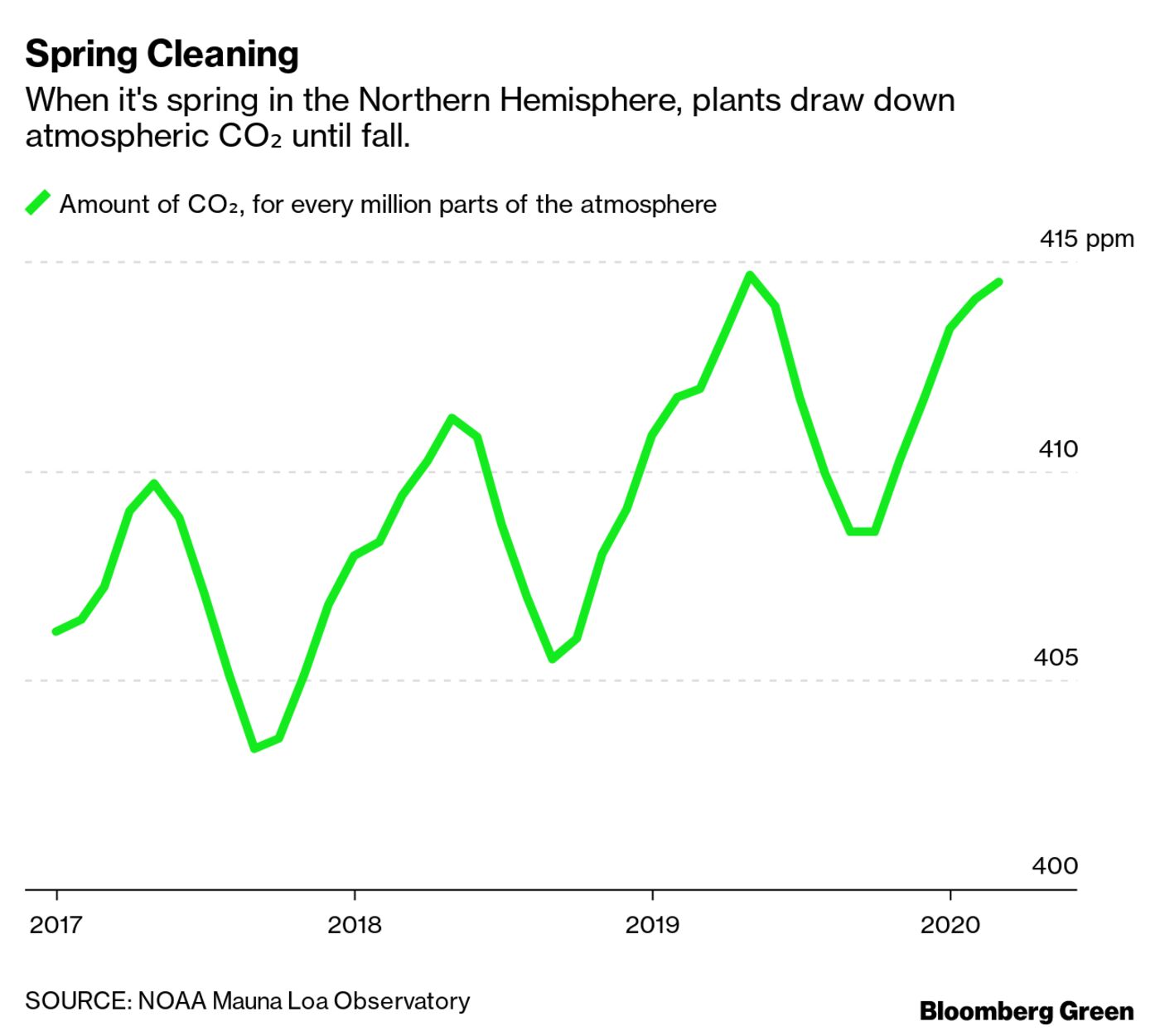Springtime is a difficult moment to puzzle out what the ongoing economic shutdown means for global warming. Carbon-dioxide levels always drop throughout the spring and summer in the Northern Hemisphere, as hungry plants absorb the primary greenhouse gas. This seasonal effect is occurring as pandemic lockdowns have stopped billions of people from driving and working, slashing fossil-fuel use and lowering carbon-dioxide emissions. “If we were to continue like this for months, instead of weeks, we will see a drop in carbon emissions that we haven’t seen in my lifetime,” said Rob Jackson, a professor at Stanford University and chair of the Global Carbon Project. “And probably since the end of World War II. That’s where we’re heading.”
But even a sustained decrease in new emissions this year—under a scenario in which the ongoing economic collapse is more severe than the 2008 recession—would have little impact on the level of CO₂ in the atmosphere. In fact, CO₂ levels will almost certainly continue to rise.
Looking at the major trackers of atmospheric CO₂ concentrations shows the consistent, clockwork turn of the Earth’s carbon cycle. The number goes up over time but falls slightly under the seasonal influence. Scientists measure the atmosphere’s CO₂ concentration in parts per million, or ppm. Right now, CO₂ makes up about 415 ppm of the atmosphere. That’s up from 280 ppm in the 18th century, before industrialization. The higher the CO₂ count goes, the more dangerous climate change becomes.

These readings of CO₂ concentration—what stays in the atmosphere for the long haul—are different from CO₂ emissions, or the amount of gas that leaves power plants, vehicles and other sources of pollution. What we know of the impact of the pandemic on global emissions is in incomplete, with rough estimates from some of the earliest hit nations. Not long after China began to close down economic activity because of Covid-19, analysts began to estimate how much climate pollution would be prevented due to quarantines. The conclusion so far: about 25%, and only temporarily.
